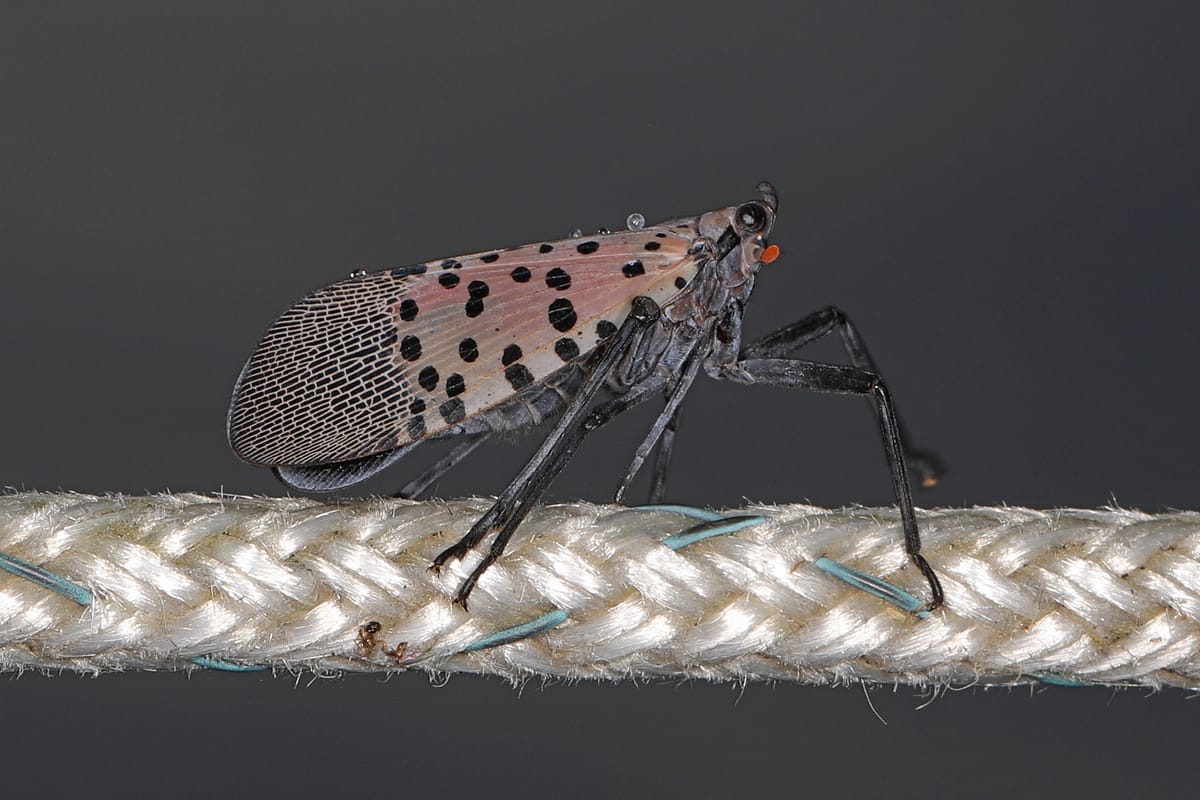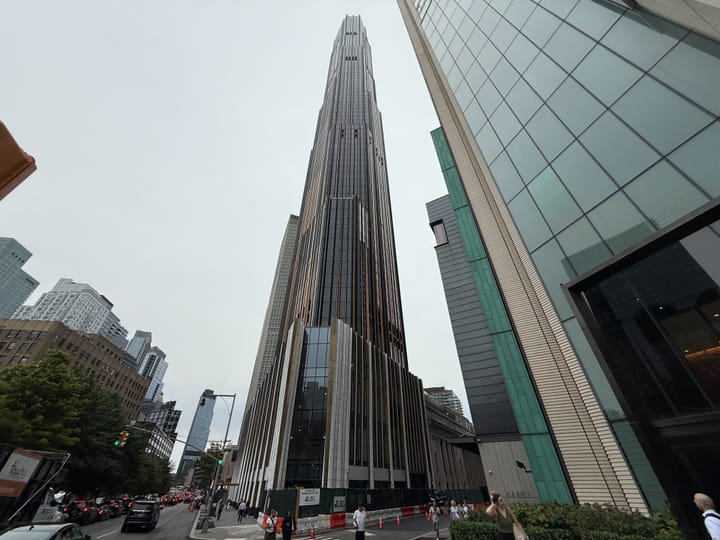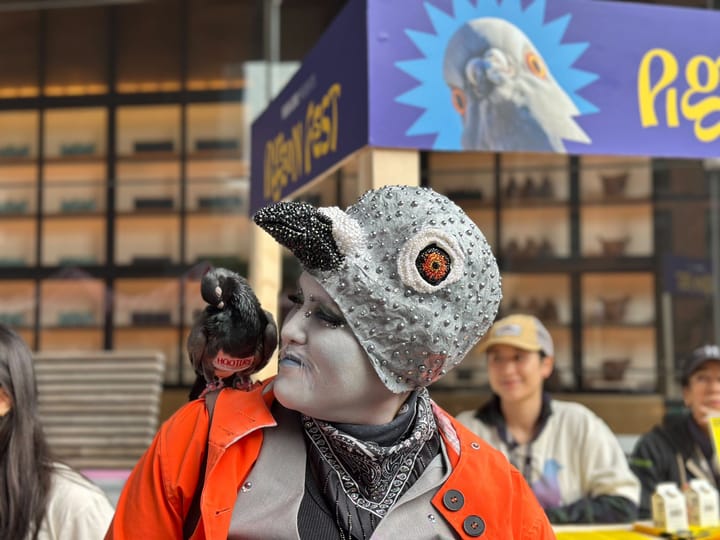Why we always have some new invasive insect species
Once upon a time, cockroaches were the new invasive insects on the block, and just look at them now.

New Yorkers have recently been swarmed by bug-related headlines.
Parachuting spiders invading the city’s skies, the return of the dreaded spotted lanternfly, aphids that blew in on last year’s wildfire smoke, several thousands ants in a trench coat to run for City Council; OK, that last one was made up, but you probably would have believed it with the way things are going.
Regardless, invasive bugs have grabbed some headlines — and sent some shivers down spines — in the greater NYC area in recent years.
This increase in insects isn’t happening in a vacuum. While there’s no need for hysteria (yet), at least one local entomologist stressed that if we don’t treat our city – and our planet – well, new and strange bug species will continue to make a new home in the Big Apple.
You probably guessed that the changing climate has something to do with the scourge of bugs picking up and looking to make it in the big city, and you’d be right. But there’s a more specific reason that New York is the site of so many invasive species: our long-standing status as a hub of international commerce.
“New York City is a port, so we're always going to have invasive species,” said Jessica Ware, associate curator and current division chair in the Division of Invertebrate Zoology at the American Museum of Natural History. “For as long as there have been people in America, there have been insects arriving with us”
Spotted lanternflies, for instance, can be harmful to native plants, and the bugs are particularly harmful to stone fruit plants like grape vines. The most recent theories about how they got here, Johnson told The Groove, point to lanternflies coming over from Southeast Asia on stones used commonly for patio landscaping. They like to lay eggs on hard, flat surfaces, so experts think they may have hitched a ride on the stones and then set up shop once they were unloaded in New York.
“Some things that arrive aren't great at establishing, but spotted lanternflies have been very good at it,” Ware said.
Like the lanternflies, Joro spiders might be catching a ride to the states in shipping containers from East Asia that arrived in Georgia a few years ago. They are now thought to be making their way up north, but it's unclear when they will actually get here.
Headlines such as “Giant venomous flying spiders with 4-inch legs heading to New York area” and “Giant, parachuting Joro spiders expected to arrive in NY and NJ this summer.” have caused some hype and hysteria in the city. But this kind of invasion is not unusual.
“We've had invasive species in this country for as long as humans have been migrating here,” Ware said.
Common American cockroaches, now as New York as a yellow taxi cab, were once invasive species, and are believed to have come over on transatlantic slave ships, Ware said.
“I like the idea of understanding the last 400 million years, and I think insects are the clue to understanding that, because they've been around longer than most of the life on Earth,” Ware said.
Invasive Invaders
Insects have been around forever, and continue to play a crucial role in the urban ecosystem of New York City. But the invaders threaten to throw off that delicate balance.
“There's lots of insects that do very well in urban settings,” Ware said. “Some of those community members are the same as what you would see in other areas. We have decomposers [like worms and snails] that are decomposing and aerating the soil in this in the medians on Broadway. We have beautiful butterflies that are pollinating flowers in Central Park.”
She added: “All of the types, the kind of main jobs that insects do in rural settings, we see them, those similar jobs being done just in this urban setting.”
In more recent history, a few invasive species have interrupted some of that diversity, and scientists like Ware have taken note.
“We're concerned about invasive species and their impact, and it's hard to measure impact, especially in short periods of time,” she said.
Among the invaders are the spotted lanternflies, which are native to parts of China and Vietnam and were first found in the city in 2021.
Over the last few summers, New Yorkers have become well associated with the spotted lanternfly. The little critters’ excretion – known, weirdly, as “honeydew’ – can be harmful to native plants, and the bugs are particularly harmful to stone fruit plants like grape vines.
But researchers haven’t had enough time to truly understand the lanternflies’ impact.
“We haven't seen a complete collapse of the grape and apple crops of New York State, but what we have seen is that spotted lanternflies have become established,” Ware said. “We don't yet know, because it's been so short, the impact of that on native species.”
Joining the lanternflies in the city, and in the headlines, this summer are the Joro spiders, four-inch long spiders also from Eastern Asia, which have the unfortunate tendency of traveling through the air.
While Joro spiders are venomous, they rarely bite humans, and even if they did, their venom is not harmful, and there is no evidence they pose a real threat to people or pets.
“If you don't like big spiders, yeah, it probably will freak you out,” Ware said, adding that similar species to the Joro are already prevalent in places such as Florida.
“So in terms of your fear factor, you should definitely relax,” she said.
However, the arrival of lanternflies and Joro spiders are also indicative of worldwide climate trends, and that is scary on its own.
A different kind of ‘fear factor’
The increasing number of invasive species in the five boroughs is as stark an example of climate change’s effect on the city as the extreme storms, flooding and consistent and prolonged heat waves, like the one that melted New Yorkers to their cores earlier this month.
“Things in general, with climate change, can expand and change their ranges, even if they weren't transported by humans,” Ware said. “So there's lots of insects that are changing the ranges, that are moving further north.”
Parts of North America, including New York, that otherwise would have colder winters and more mid-range summers, are now shifting to warmer winters and scalding hot summers. That has allowed species to settle down here that would normally be unable to live out their New York City dreams.
“In terms of your fear factor, what this means about what we're doing to our planet and how we're shaping these ecosystems, through climate change, through our movement of goods and through the movement of people, you should be very worried about that,” she said. “Be less worried of the Joro spider as a Joro spider; be more worried that the one constant in all of these stories is that humans are altering our landscape, altering who lives where.”
Ware also said climate change is drastically affecting our own native species.
“Climate change is one of the drivers of insect decline of our native species, and invasive species are also one of the drivers of the decline, because they can out-compete,” Ware said. “So you have so native species getting it from both angles.”
Ware worries that as the climate keeps changing, we might actually see fewer headlines about bugs — both native and invasive — rather than more.
Although less bugs may sound like good news for some, she also means the key native species she mentioned earlier, like worms that aerate soil and butterflies which pollinate Central Park.
“If it gets too hot, even invasive species aren't going to be able to handle anywhere on Earth,” she said.
How to fight invasive species
Invasive species have been around forever even before human-caused climate change gave them some new impetus to relocate. Scientists create models of where bugs might be found to stay ahead of the curve, there are ways New Yorkers can as well.
Ware says that understanding what we have in our own backyards, gardens and parks can help scientists spot an invasive before it establishes. The list of native bugs is long, so check out this rundown of the invasive species you should keep an eye out for.
You can report any invasive species to the city’s Department of Environmental Protection using this form, and add your sightings to the crowdsourced resource NY iMapInvasives.
Ware also said that New Yorkers can turn off outdoor lights out at night, or replace lights with yellow toned (rather than blue toned) bulbs to keep away bugs; we can plant window boxes and curb gardens with native plants to keep native species strong and plentiful in the face of invasive challengers.
In general, she suggests just taking better care of the environment around us, and voting for people who consider that a priority. Because while cockroaches were built to withstand basically anything, we were definitely not.
An earlier version of this story misidentified Jessica Ware.




Comments ()